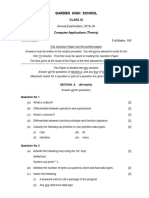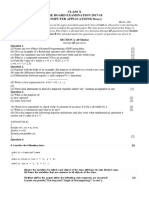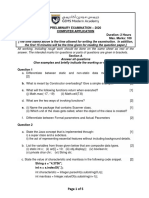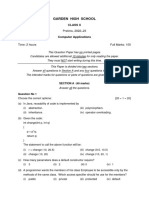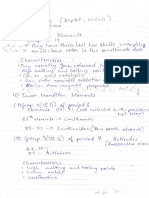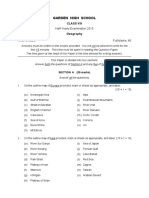0% found this document useful (0 votes)
99 views5 pages9 Computer Applications
The document contains 10 questions in Section A testing concepts of OOPs, loops, functions, arrays etc. and 4 questions in Section B requiring programs on series calculation, special number checking, pattern printing, function overloading, menu driven programs on number checking and calculations. Main focus is on testing basic Java concepts and programming skills.
Uploaded by
Deepram AbhiCopyright
© © All Rights Reserved
We take content rights seriously. If you suspect this is your content, claim it here.
Available Formats
Download as PDF, TXT or read online on Scribd
0% found this document useful (0 votes)
99 views5 pages9 Computer Applications
The document contains 10 questions in Section A testing concepts of OOPs, loops, functions, arrays etc. and 4 questions in Section B requiring programs on series calculation, special number checking, pattern printing, function overloading, menu driven programs on number checking and calculations. Main focus is on testing basic Java concepts and programming skills.
Uploaded by
Deepram AbhiCopyright
© © All Rights Reserved
We take content rights seriously. If you suspect this is your content, claim it here.
Available Formats
Download as PDF, TXT or read online on Scribd
/ 5









